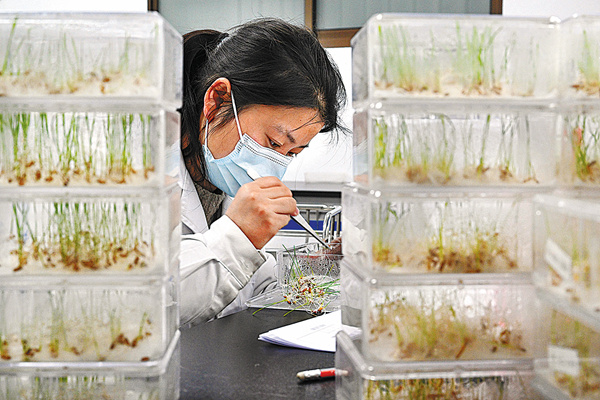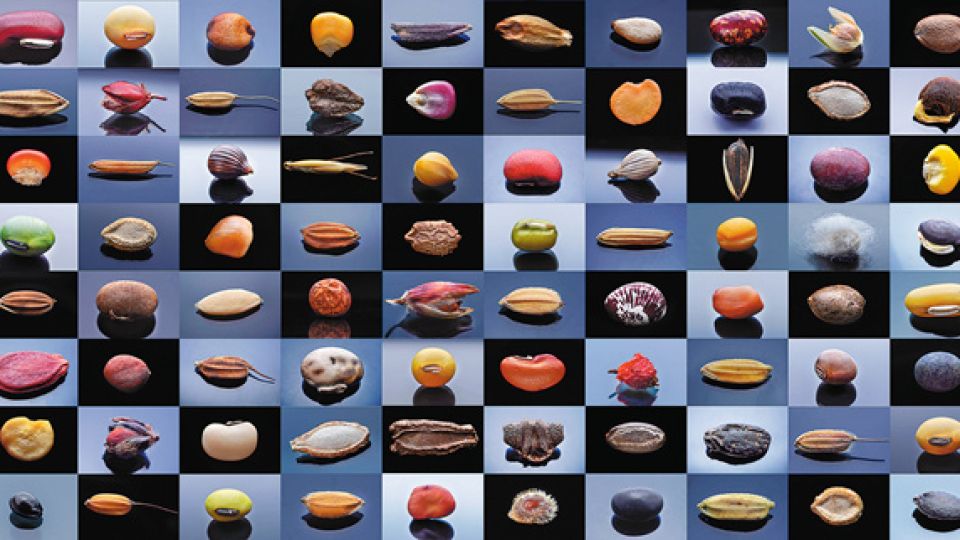April 11, 2022
BEIJING – Seeds are the “chips” of agriculture. Academian Yuan Longping spent more than 50 years turning a wild rice seed into a “super rice” that benefits the world.
Spring is the season for sowing. The Hunan Provincial Crop Germplasm Resource Bank, within the Hunan Academy of Agricultural Sciences, preserves, inspects and breeds the little-known crop seeds every day. The resource bank is the first comprehensive public service platform for the conservation and utilization of crop germplasm resources in Hunan.
Its total construction area is nearly 700 square meters, of which the low temperature control area covers an area of 350 sq m. There are five warehouses including long, medium and short-term, as well as parental and adjustable repositories. It also has six functional areas: strategic resource protection, basic resource preservation, resource display and exchange, resource information management and resource pre-processing.

In the long-term repository, Dr Tang Xiao takes out the preserved rice seeds to check their conditions and prepares for seed renewal and reproduction.[Photo provided to China Daily]
In the long-term repository of the resource bank, germplasm resources are “hibernating” in a low temperature environment. Rows of 4-meter-high shelves are closely arranged, and each layer of the shelves is densely stored with small round golden boxes. Inside the box is a seemingly inconspicuous seed, but it records the genetic secrets of various crops for thousands of years. As one of the country’s most important strategic resource reserves, these germplasm resources can be stored here for more than 50 years and can be easily awakened at any time of need.

At the scientific research and demonstration base of Hunan Rice Research Institute, technicians are busy with the seedling test of small rice varieties.[Photo provided to China Daily]
Right now is the spring ploughing season, and the technicians in the scientific research and demonstration base of Hunan Rice Research Institute are busy with the seedling test of small rice varieties.

Technicians conduct sowing test on small rice varieties.[Photo provided to China Daily]
The germplasm resource bank not only provides basic materials for researchers to create new varieties (such as new hybrid rice varieties), but also provides convenience for the purification and rejuvenation of dominant local varieties, with significant social and economic benefits. For example, the fragrance of Jiangyong Fragrant Rice, for various reasons, diminishes when farmers plant a range of varieties at the same time. The Jiangyong Fragrant Rice resources preserved in the germplasm resource bank have recovered the fragrance by purifying and rejuvenating the preserved seeds.

Zhang Zhuqing (right), a pepper breeding researcher at the demonstration base of Hunan Vegetable Research Institute, guides pepper seedlings in the greenhouse.[Photo provided to China Daily]

A staff member takes out the rice seeds collected in the 1970s to check their traits and prepares for regeneration.[Photo provided to China Daily]

An inspector conducts germination test on the preserved rice seeds. The resource bank regularly checks the germination rate of seeds to ensure the activity of the resources.[Photo provided to China Daily]

Technicians insert labels and numbers on the small varieties of rice that are sown and raised for future testing and research.[Photo provided to China Daily]


